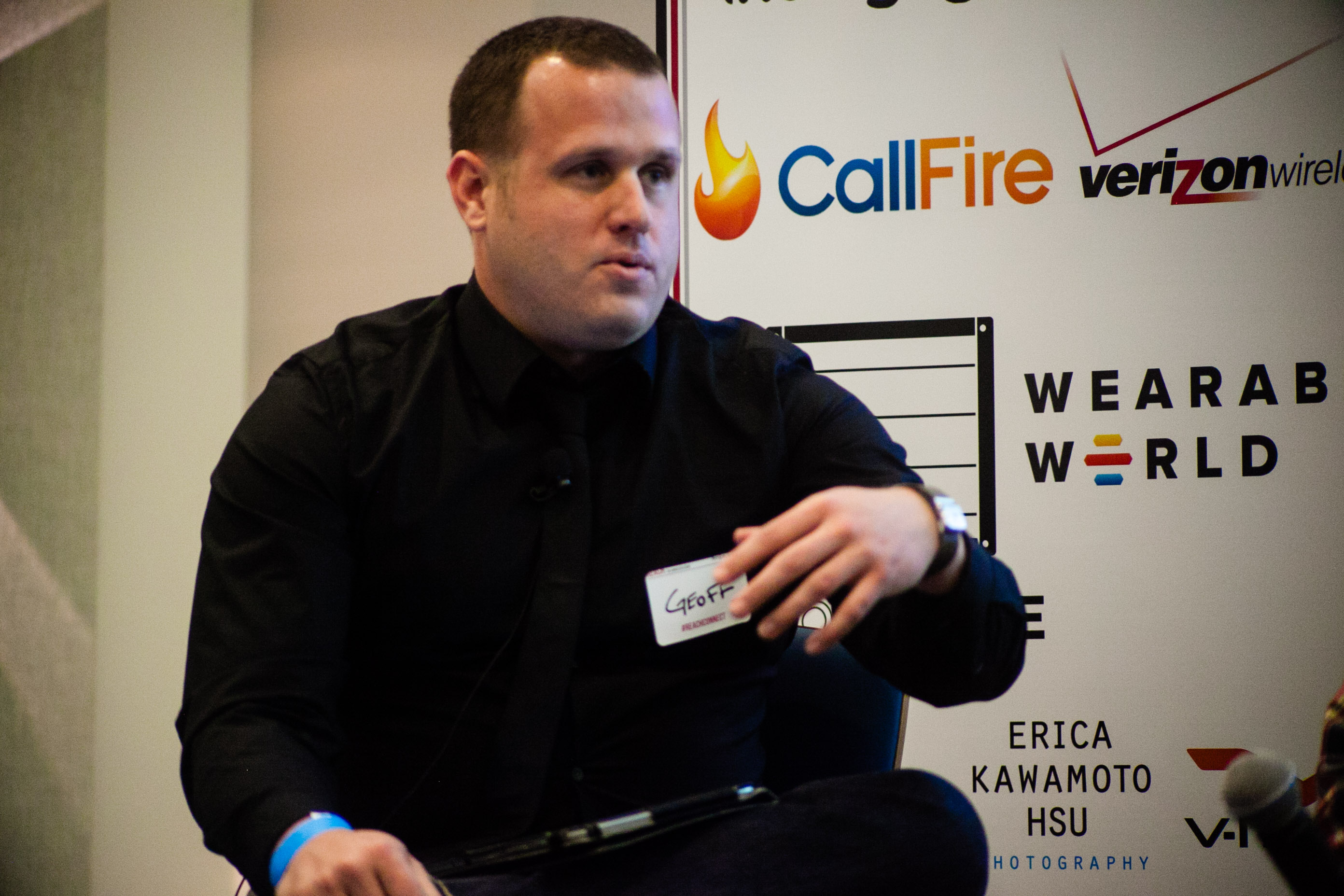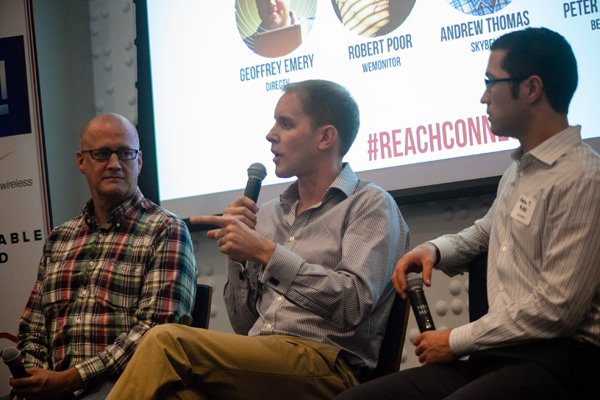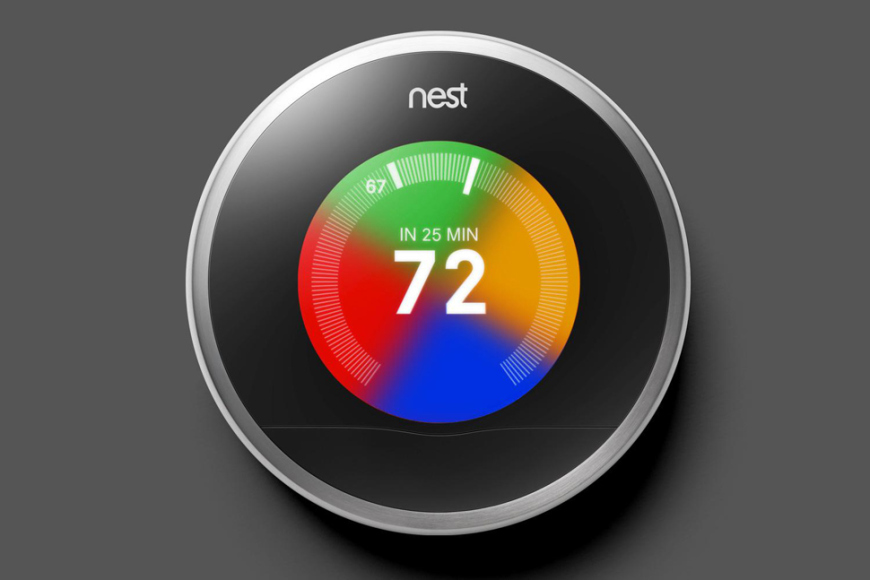REACH Connected Future: Home Recap
As we recall, this year has kicked off with some fierce acquisitions in the connected home and internet of things (IOT) space, namely with Google’s high profile $3.2 Billion acquisition of smart home device company, Nest. To say we were excited for the home track of REACH | The Connected Future would have been a severe understatement.
Everyone’s been wondering the major question of whether IOT is going to be the next industry.
Luckily for us, we had our own panel of experts to peel back the layers on this booming industry. With Geoffrey Emery of DirecTV as moderator, we present the following panelists:
- Andrew Thomas, Founder of Skybell
- Peter Taylor, Senior Product Manager of Belkin Wemo
- Robert Poor, VP Marketing & Chief Science Officer at weMonitor
Our panelists’ companies included the A-Z gamut of services available for a connected home. You arrive to the front door and interact with your camera-mobile synced Skybell doorbell. Once inside, Belkin’s Wemo systems control everything from lighting to entertainment, and weMonitor watches over everything’s power consumption.
Pretty certain there was no better way to get such an all encompassing view.
The Significance of A Connected Home
As we enter a new age of connected home devices (which as we know is a booming industry, running somewhat silently in the background), the non-early adopters are left wondering “why is this important?”
Robert discusses the benefits of just being able to see his very young children through remote monitoring. He knows each day, exactly when the nanny takes the kids out for the day, and it gives him a personal rush of happiness that his children are being taken care of well.
Andrew, whose company is pioneering the video doorbell expands on the subject of personal security. He reports that what he’s enjoyed about working in the space is that everyone interprets the benefits of a connected home differently. Since family units differ in their natural roles (mothers, fathers), a connected home’s significance can mean different things to everyone.
Let’s Get Connected
Our panelists unanimously agree, to be working/an early adopter in the space, you’ve “got to be geeky”. With all the different devices out there, and different protocols to connect them, what are the benefits and drawbacks of each?
Overall, WiFi really is the standard. But at the same time, it’s the elephant in the room. It can be unreliable, more expensive than other protocols, and immediately makes the assumption that a connected home runs in a wireless (not wired) environment. Other protocols like Zippy, can serve as a low power, low cost way to connect things with slow data rates.
The panel continue to go over a list of other possibilities with some pros and cons for each, but one thing that they all agree on:
WiFi is King
Everyone agrees: WiFi isn’t just popular, it’s the standard. Beyond that, it’s a franchise. Industry insight: Because we accept WiFi as the baseline, blue chip manufacturers are turning back to WiFi chips to compete with lower cost, lower power protocols. And as things improve, people will continue to rally around it.
Peter from Belkin jumps into the fray. Belkin’s Wemo has been focused on WiFi deliveries since day one. Early days may have felt like a hedging, but the company didn’t feel the need to work with other protocols as long as there were opportunities to improve. Peter notes that with connection protocols, it needs to be invisible to consumers. Skybell too, has relied only on WiFi for data and video upstreams.
Are Smarthubs the Future?
Our panelists unanimously agree that at the moment, Smarthubs are uncertain. Robert gives us a quick history lesson. In the mid 80’s, Cisco started working with smarthubs to unify all the connection protocols. But on a consumer level, they really didn’t care. Ziggy, Zeeway, WiFi, etc. – as long as the devices can talk to each other, that’s all consumers care about.
To that extent, smarthubs can make things simpler, and that would be a great thing, but as of now, the hubs best at unifying are expensive. Almost $300+ because they use multiple radios. “One hub to rule them all?” Not quite. What Peter believes is more feasible, is to use WiFi to solve different problems across the board.
But therein lies the problem. The panel queries our audience:
“Who has smart devices in your homes? (A few hands) How many use WiFi? (Hands stay up). How many have had zero trouble in configuring your device? (All hands go down).
Robert explains that while we may still be a ways off from full reliability. In fact, his company is actually experimenting with a smartplug product that utilizes QR codes, not WiFi to connect.
Multiple Tiers, Multiple Apps
Our panel take a moment to discuss the difficulties in working within a multi-tiered ecosystem. They refer to the concept of “customer ownership” and provide examples. Let’s say you have a Whirlpool machine, bought from Home Depot, using Proctor and Gamble soap. It’s entirely possible that each one of these companies would have their own app to control some level of monitoring and connectivity but as Robert notes, who would want to use three different apps to perform one function?
Andrew however, does believe in isolating your benefit to solve a pain point. That’s how you set up a two-way experience for customers, by optimizing their experience. He doesn’t see why he can’t go use his light app to brighten the room, then answer his door with the Skybell connected doorbell.
Will one app rule them all? Only time will tell. Another notable point though – in the end, who owns all this data? Andrew expresses his open-ness in sharing data but reminds us that it needs to make sense for the user. To create the connected home, things must tie together.
Deepening the Connections
Robert brings up an interesting sub surface of the connected home industry with companies like IFTT (If This Than That) who help users create condition recipes. IFTT focuses on connecting web apps, but an example for connected home use would be:
- If the motion sensor has been active for the last 10 minutes, turn on the Water Heater.
- If the garage door opens, send me an SMS.
- Per Skybell’s focus on security – If there’s someone at door longer than ten seconds, initiate a video phone call.
Robert has found with services like these, they’ve been able to continue gathering data and use cases for functions that they, the product makers might not even have seen. Almost like an open-source process development environment, they’re starting to see which patterns are naturally being used more often than others.
By gathering this instrumental data over time, companies like our panelists’ are able to improve the user experience, refine their products and services, and improve user integration.
Securing the Home
Another pressing question: How safe are we in terms of communication security? Our panelists do agree that we’re in the midst of the ‘wild wild west’, pointing to the long duration required to finally secure WiFi protocol (almost 15 years), but overall, they don’t believe there’s too much to worry about.
“Securing home devies and bank accounts are very different things”, and there’s not much a remote hacker can do to wreak havoc on your home, since they do have to be within very close proximity. Since Andrew is in the business of providing a safer home, he adds his perspective that Skybell’s goal for home automation is to bolster the theme of safety. More control over your home, more visibility with motion sensors and cameras.
Was Nest the Shot Heard from Around the World?
Robert answers straight up. “Google didn’t pay $3.2B to be a small venture.” He reminds us that Google is in the business of figuring out how to collect and curate data for its customers. And you can only get so much data from smartphones and web services. Now, being able to interact within the home means more data exchange and meta data.
Theoretically, they would be able to take this valuable data, and derive thousands of dollars worth of value (say in energy savings) by creating the profile for a “connected customers”. Peter chimes in. The industry is offering more every day experiences for consumers. This acquisition has made home automation relevant to a whole new audience.
And while the US isn’t quite as aware of energy awareness as the European markets, it’s a growing sector. The Nest acquisition, and these growing consumer and environmental trends have legitimized the conversation with other people and elevated the smart device on the consciousness of mainstream consumers. Andrew tells us, it’s the beginnings of of home automation. Exciting stuff!
Wrapping it Up. What’s Next?
Our panelists go into our final rounds, with some questions from the audience. What’s next?
Peter reminded us earlier that devices need to easy to use, and seamlessly integrated into daily life. He believes we are going to continue seeing new types of connected devices: fire alarms, smoke detectors, switches continue to get smaller, sleeker, more secure. He doesn’t dismiss the possibility of smarthub systems that will be able to connect multiple devices, and as hardware gets cheaper, so will the barrier to entry. Seamless integration, he notes is also the ability to meet the needs of multiple, different people.
Robert makes a good point. We (the audience and panelists) are here because we’re enamored with smart devices. (Very true). Most people don’t care for smart devices, and just want things to be simple. He agrees with Peter that we need to see more use cases beyond the bachelor techno-geeks *audience chuckles*, and the right direction to go is a wide variety of small intelligent devices.
Andrew believes we’re still crawling. Great devices are launched every single day and while he is in the business of focusing on one-off devices in the short term, he’s interested to see big players come out and build large platforms.













